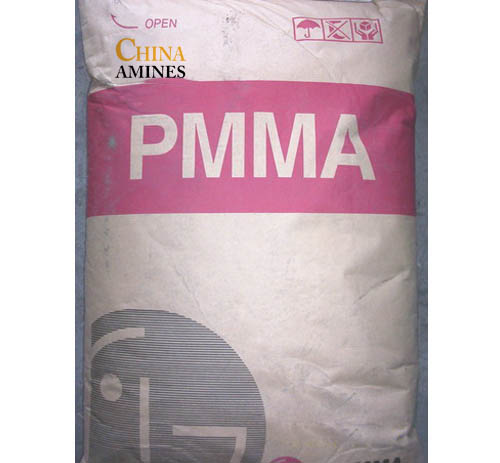1. Chemical Structure and Properties
Molecular Formula: C₅H₈O₂
Structural Formula:
CH₂=C(CH₃)COOCH₃
A vinyl monomer featuring a methacrylate ester group with a reactive double bond.
Physical Properties:
Appearance: Clear, colorless liquid with a sharp, fruity odor.
Boiling Point: 101°C; Density: 0.94 g/cm³; Vapor Pressure: 38 mmHg at 20°C.
Solubility: Slightly soluble in water (1.5 g/100 mL at 20°C); miscible with most organic solvents (ethanol, acetone).
Chemical Properties:
Polymerization: Undergoes radical or ionic polymerization to form poly(methyl methacrylate) (PMMA).
Reactivity: Susceptible to peroxide formation upon prolonged exposure to air/light.
Flammability: Combustible (flash point: 10°C; autoignition temperature: 430°C).
2. Industrial Applications
Polymers & Plastics:
PMMA Production: Transparent, UV-resistant "acrylic glass" for automotive headlights, signage, and optical lenses.
Coatings: High-gloss finishes for automotive paints and industrial equipment.
Medical & Dental:
Bone Cements: MMA-based cements for orthopedic implants and dental prosthetics.
3D Printing Resins: Photopolymer resins for biocompatible medical devices.
Adhesives & Sealants:
Structural Adhesives: Used in aerospace composites and automotive panel bonding.
Textiles:
Fiber Modifiers: Enhances wrinkle resistance and dye affinity in synthetic fabrics.
3. Safety and Toxicology
Health Hazards:
Acute Exposure:
Inhalation (≥100 ppm): Irritates respiratory tract, causes headaches (TLV-TWA: 50 ppm).
Skin Contact: Defatting action leads to dermatitis (rabbit skin LD₅₀: >5,000 mg/kg).
Ingestion: Moderately toxic (oral LD₅₀ rat: 7,800 mg/kg); gastrointestinal distress.
Chronic Effects:
Neurotoxicity: Peripheral neuropathy observed in occupational settings with poor ventilation.
Carcinogenicity: Not classified (IARC Group 3), but metabolites may pose risks.
Protection Measures:
PPE: Nitrile gloves, organic vapor respirators, and explosion-proof ventilation.
Storage: Inhibited with hydroquinone; store in amber containers under nitrogen.
4. Environmental and Regulatory Compliance
Environmental Impact:
VOC Emissions: Contributes to ground-level ozone formation; regulated under VOC directives.
Aquatic Toxicity: LC₅₀ (fish, 96h): ~50 mg/L; moderate bioaccumulation (log Kow: 1.9).
Biodegradability: Slow (OECD 301F:<20% in 28 days).
Regulatory Frameworks:
EU:
REACH: Registered; restricted in consumer adhesives (Annex XVII).
CLP: Classified as Flam. Liq. 2 (H225), Skin Irrit. 2 (H315).
USA:
EPA: Regulated under Clean Air Act (VOC); TSCA-listed.
China:
GB 30981-2020: VOC limits in industrial coatings (≤420 g/L).
Waste Management:
Recycling: Distillation for monomer recovery; PMMA scrap repurposed into recycled acrylic.
Incineration: Controlled combustion with scrubbers for CO₂ and NOₓ capture.
5. Case Studies and Application Insights
Case 1: Lightweight Automotive Glazing (Tesla, 2023):
Innovation: Replaced glass with PMMA panoramic roofs in Model Y.
Result: 40% weight reduction and 15% longer EV range.
Case 2: Sustainable Acrylic Production (Röhm, 2022):
Process: Integrated CO₂-derived MMA via catalytic carbonylation (C4+ technology).
Impact: Reduced carbon footprint by 50% vs. conventional acetone cyanohydrin route.
Comparative Analysis:
MMA vs. Styrene:
Pros: Higher UV stability, clarity, and biocompatibility.
Cons: Higher production costs and flammability risks.
PMMA vs. Polycarbonate (PC):
Pros: Better scratch resistance and optical clarity; lower density.
Cons: Lower impact strength and thermal resistance.
Specifications:
Methyl Methacrylate (MMA) is a clear, fast-polymerizing liquid monomer with excellent weather resistance and durability, widely used in acrylic resins, adhesives, and coatings, available from China Amines Co.


